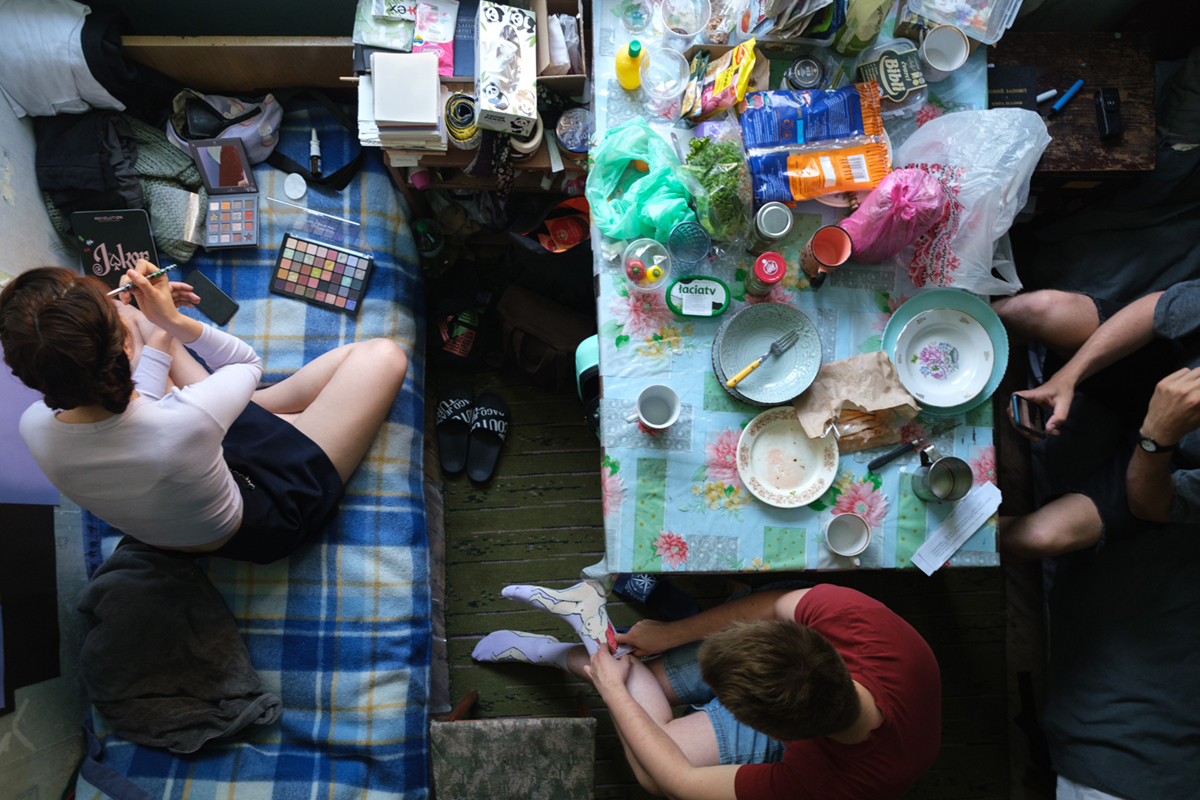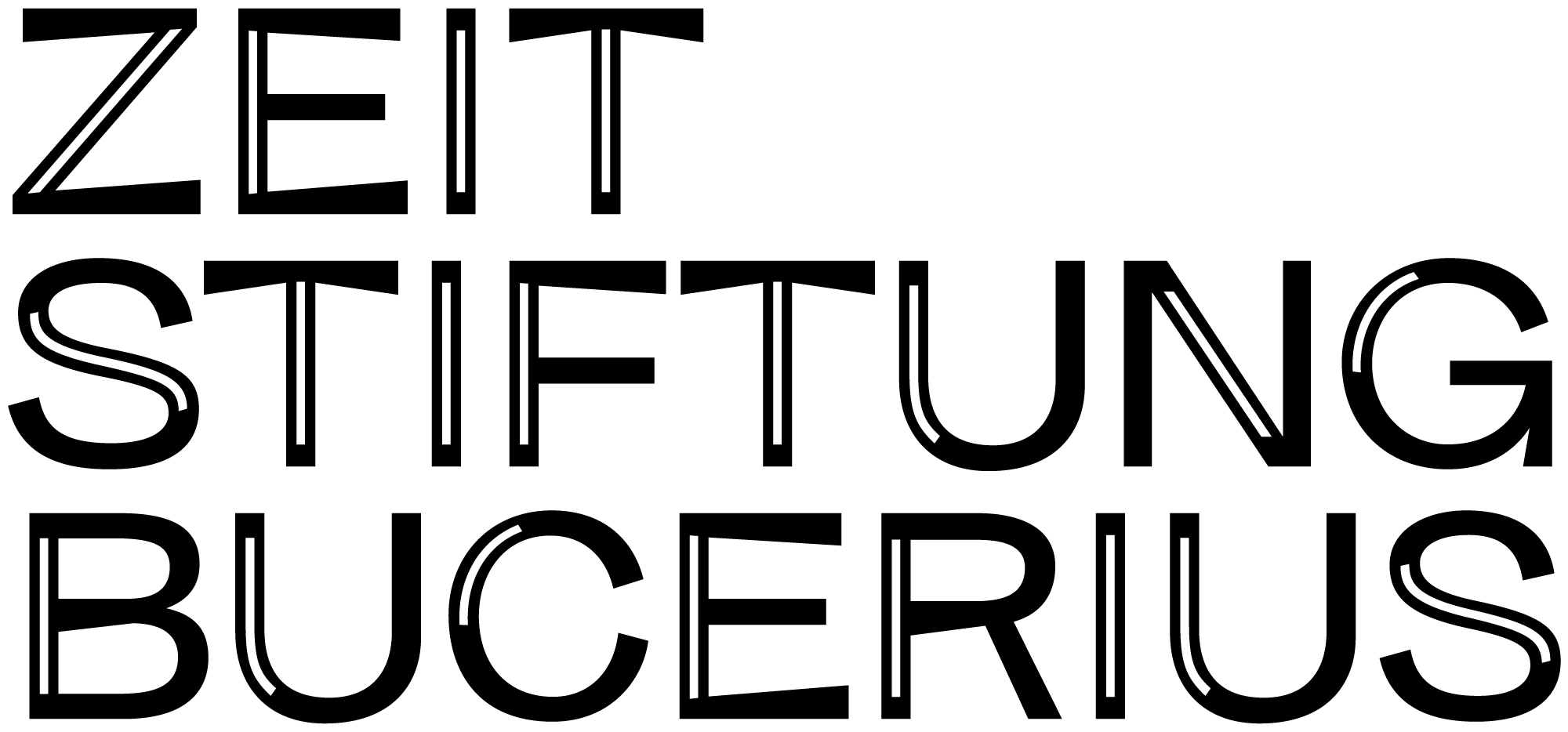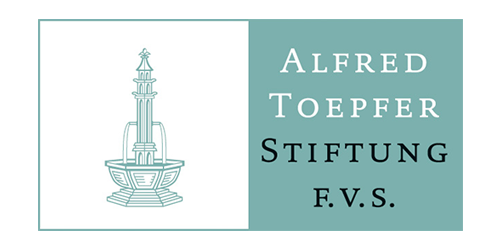Fotografische Perspektiven auf den russischen Angriffskrieg gegen die Ukraine: Igor Chekachkov

IGOR CHEKACHKOV
„Was macht das Gefühl von Zuhause aus – und was passiert, wenn man dieses Gefühl verliert?“
Dieses Foto habe ich in einem Wohnheim aufgenommen, in dem Vertriebene leben. Marina, Kostja und Wlad sind Freunde aus Kyjiw. Sie haben gemeinsam Film studiert und sind zu Beginn der Invasion nach Lwiw gezogen. Jetzt leben sie zusammen in einem kleinen Zimmer in einem Wohnheim.
Vor etwa zehn Jahren habe ich in Charkiw an der Fotoserie Daily Lives gearbeitet, die zeigt, wie Menschen zusammenleben und sich gemeinsame Räume teilen. Diese Serie setze ich heute in einem ganz anderen Kontext fort – ich dokumentiere, wie Menschen, die gezwungen wurden, ihre Häuser zu verlassen, in Notunterkünften zusammenleben. Als ich Charkiw gerade verlassen hatte, lebte ich in einem Haus in der Nähe von Lwiw mit etwa 20 anderen Vertriebenen zusammen. Dann zog ich an einen anderen Ort, und wir waren nur noch zu sechst. Diese Erfahrung machte mich neugierig darauf, wie andere Vertriebene zusammenleben.
Ich versuche, die Grenzen der Dokumentarfotografie zu erweitern und neue Formen der Darstellung des Krieges zu finden. Dokumentar- und Pressefotografen leisten eine großartige Arbeit, aber es gibt viele von ihnen auf der ganzen Welt. Deshalb möchte ich experimentieren und mich auf persönlichere Themen konzentrieren. Ich habe das Gefühl, dass ich noch mehr Zeit brauche, um darüber nachzudenken, was gerade passiert, was ich damit machen kann und was dabei die Rolle des Fotografen ist.
Mit meiner Fotografie frage ich, was das Gefühl von Zuhause, von Heimat ausmacht und was passiert, wenn Menschen dieses Gefühl verlieren. Wie Werte sich wandeln, wenn wir mit etwas so Schrecklichem konfrontiert sind, wie sich unsere Persönlichkeit verändert. Das sind die Fragen, die ich mir selbst stelle, und auch den Menschen, die ich fotografiere.
Kann Kunst eine Brücke bauen zwischen der Ukraine und russland? Ich hatte immer das Gefühl, dass Kunst der beste Weg ist, um Brücken zwischen Kulturen zu bauen, aber jetzt bin ich nicht mehr so optimistisch. russland hat so viele Dinge getan, um Hass in ukrainischen Herzen zu säen, und die Ukrainer werden für eine ganze Weile keine Brücken zu russland bauen wollen. Jedenfalls kann ich mir das nicht vorstellen, solange russland weiterhin die Ukraine angreift. Die Menschen, die uns angegriffen haben, sind von der Kunst nicht berührt; die, die es doch sind, würden nicht in ein anderes Land einfallen. Deswegen denke ich, dass wir Künstler nicht viel tun können. Die Kunstwerke werden nie von Kreml-Politikern oder russischen Soldaten gesehen werden. Aber ich hoffe, dass Kunst – und Fotografie im Besonderen – helfen kann, eine solche Katastrophe in Zukunft zu verhindern.
This photograph was taken in the dorm, which is inhabited by displaced people. Marina, Kostya and Vlad are friends from Kyiv. They were studying cinematography together and moved to Lviv at the beginning of the invasion. Now they live together in a small room in the dorm.
About 10 years ago I was working on a “Daily Lives” series in Kharkiv, depicting how people live together and share common spaces. Now I continue this series in a very different context — I document how people who were forced to leave their homes and live together in shelters. When I just left Kharkiv I was living in a house not far from Lviv with about 20 other displaced. Then I moved to another place and there were just six of us. This experience made me interested in how other displaced people live together.
I am trying to push the boundaries of documentary photography and searching for new forms of depicting the war. Documentary and news photographers are doing a great job, but there are plenty of them from all over the world and that’s why I want to experiment and focus on more personal topics. I feel that I still need more time to reflect on what is going on, what I can do with it and what is the role of the photographer now.
With my photography I am questioning what is the feeling of home and what happens when people lose it. How values change when we face something so dreadful and how it changes our personality. These are the questions I ask myself, as well as the people I photograph.
Can art build bridges between Ukraine and russia? I always felt that art is the best way to build bridges between cultures, but now I am not so optimistic. russia did so many things to plant hate in Ukrainians hearts and Ukrainians will not want to build bridges with russia for quite a while. At least I can’t imagine this happening while russia continues to attack Ukraine. People, who attacked us, are not touched by art; the ones who are will not invade another country. This is why I don’t think we (artists) can do much. The work of art will never be seen by Kremlin politicians or russian soldiers. But I hope that art, and photography in particular, can help to prevent this kind of disaster in the future.
IGOR CHEKACHKOV
1989 in Charkiw/Ukraine geboren. Begann 2008 zunächst als Fotojournalist zu arbeiten und fand schließlich zur Arbeit als künstlerischer Fotograf.
AUSSTELLUNGEN (AUSWAHL)
2022 – Maison de la Photographie, Lille
2021 – Interphoto Festival, Białystok
2021 – Mystetskyi Arsenal, Kyjiw
2019 – Dongsung Market Art Project in Daegu/Südkorea
2019 – Einzelausstellung während des Hybrid-Kunstfestivals, Madrid
2019 – CEPA Gallery, Buffalo, New York
2018 – EEP Berlin
2017 – Fotofestival Odessa/Batumi
PUBLIKATIONEN
u.a. in British Journal of Photography, Bird in Flight, P3 uvm.








